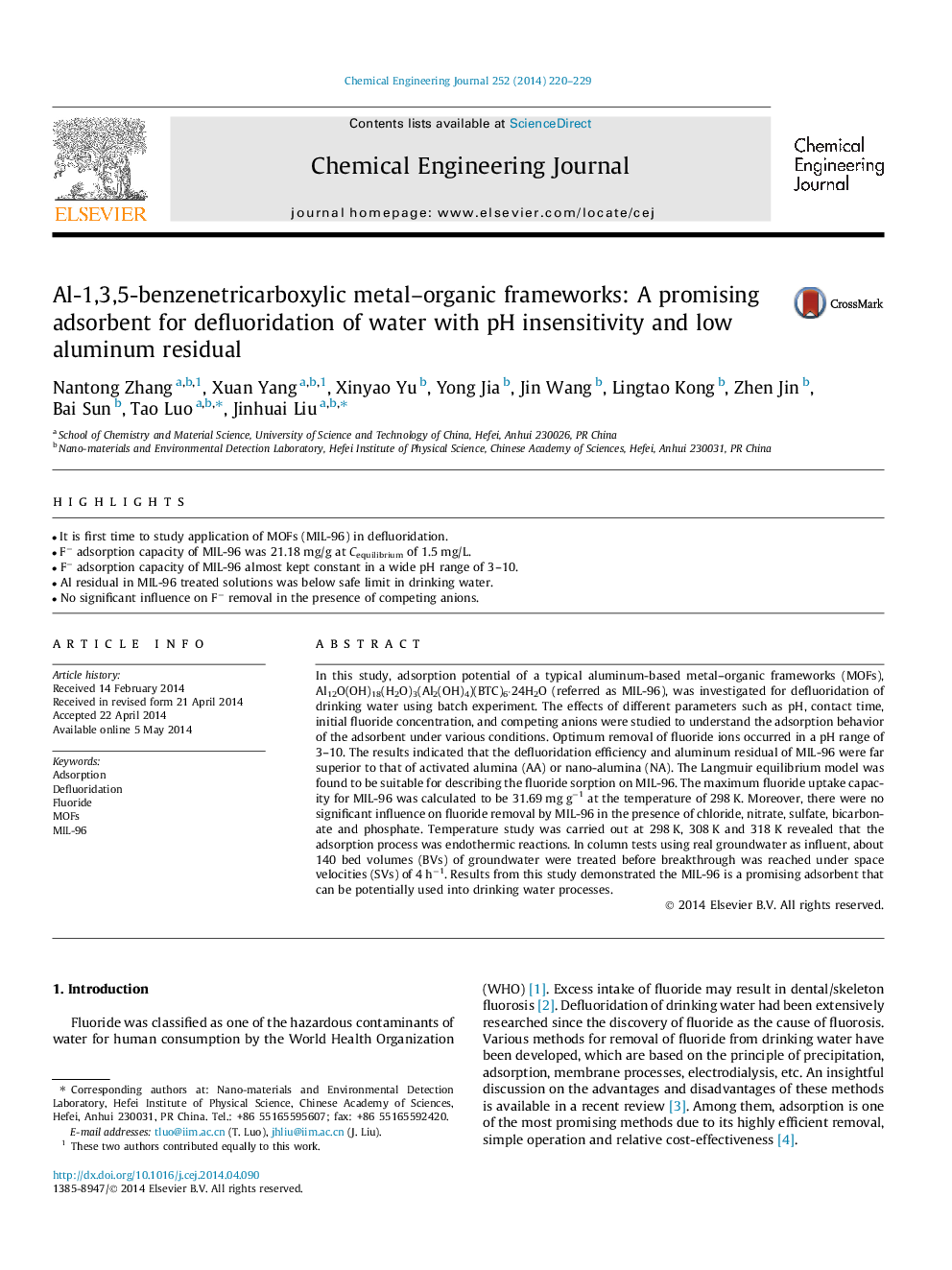| کد مقاله | کد نشریه | سال انتشار | مقاله انگلیسی | نسخه تمام متن |
|---|---|---|---|---|
| 147138 | 456386 | 2014 | 10 صفحه PDF | دانلود رایگان |

• It is first time to study application of MOFs (MIL-96) in defluoridation.
• F− adsorption capacity of MIL-96 was 21.18 mg/g at Cequilibrium of 1.5 mg/L.
• F− adsorption capacity of MIL-96 almost kept constant in a wide pH range of 3–10.
• Al residual in MIL-96 treated solutions was below safe limit in drinking water.
• No significant influence on F− removal in the presence of competing anions.
In this study, adsorption potential of a typical aluminum-based metal–organic frameworks (MOFs), Al12O(OH)18(H2O)3(Al2(OH)4)(BTC)6·24H2O (referred as MIL-96), was investigated for defluoridation of drinking water using batch experiment. The effects of different parameters such as pH, contact time, initial fluoride concentration, and competing anions were studied to understand the adsorption behavior of the adsorbent under various conditions. Optimum removal of fluoride ions occurred in a pH range of 3–10. The results indicated that the defluoridation efficiency and aluminum residual of MIL-96 were far superior to that of activated alumina (AA) or nano-alumina (NA). The Langmuir equilibrium model was found to be suitable for describing the fluoride sorption on MIL-96. The maximum fluoride uptake capacity for MIL-96 was calculated to be 31.69 mg g−1 at the temperature of 298 K. Moreover, there were no significant influence on fluoride removal by MIL-96 in the presence of chloride, nitrate, sulfate, bicarbonate and phosphate. Temperature study was carried out at 298 K, 308 K and 318 K revealed that the adsorption process was endothermic reactions. In column tests using real groundwater as influent, about 140 bed volumes (BVs) of groundwater were treated before breakthrough was reached under space velocities (SVs) of 4 h−1. Results from this study demonstrated the MIL-96 is a promising adsorbent that can be potentially used into drinking water processes.
Journal: Chemical Engineering Journal - Volume 252, 15 September 2014, Pages 220–229